Stress can be a vicious circle, influencing mental clarity, physical fitness, and well-being in general. Many people cannot escape the circle of constant thoughts, which become exhaustion and frustration. But what if there was a way out?
A holistic approach can help break this cycle of stress and bring balance into your life. This guide covers some tested methods for reducing anxiety, increasing resilience, and creating long-term well-being. With the right strategies, you will learn to go from overwhelmed to empowered.
Understanding the Stress Cycle
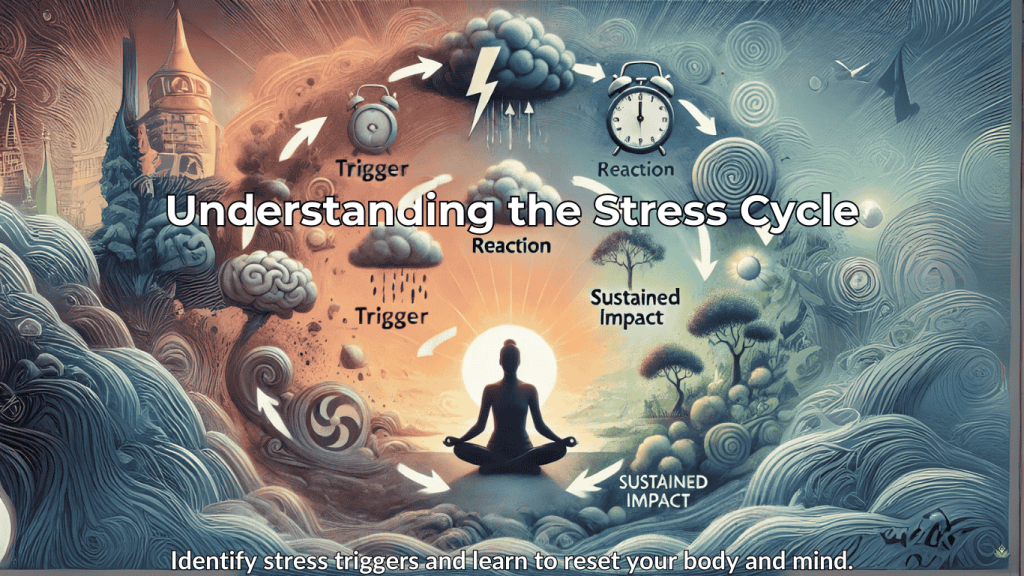
The stress cycle begins with a trigger—from a work deadline to a personal conflict. It activates the body’s “fight or flight” response, releasing stress hormones like Cortisol and adrenaline. While these hormones are helpful in short bursts, prolonged activation can create a self-perpetuating cycle:
- Trigger: A stressful event or thought initiates the cycle.
- Reaction: Your body releases stress hormones, leading to bodily responses such as heightened heart rate and muscle tightness.
- Sustained Impact: Over time, chronic activation of this cycle results in exhaustion, anxiety, and physical health issues.
Without intervention, the stress cycle can lead to conditions such as insomnia, depression, or even chronic diseases like hypertension and diabetes. Breaking this cycle requires understanding the triggers and taking proactive, consistent steps to reset your body and mind.
Mindfulness and Meditation
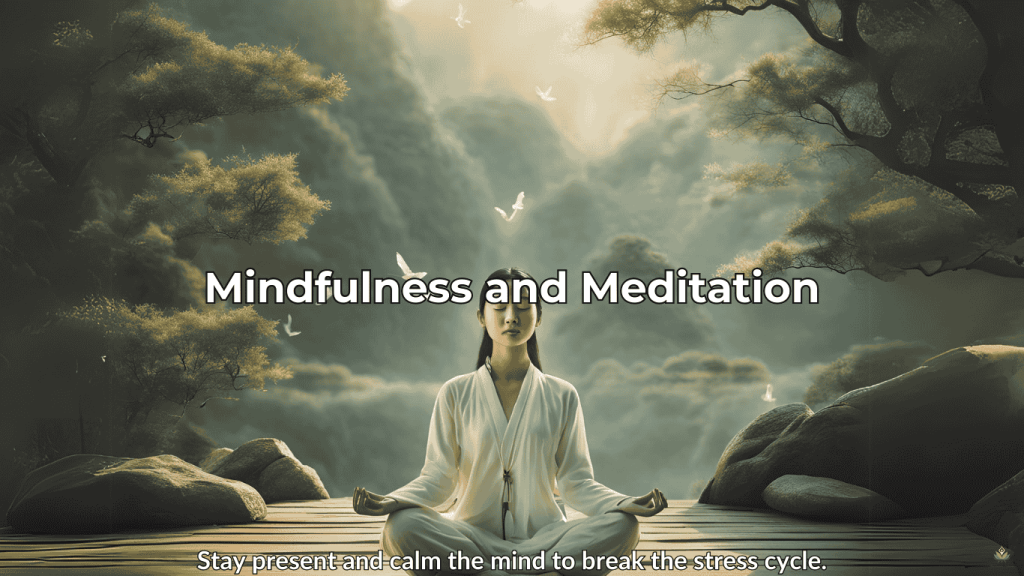
Mindfulness—staying fully present in the moment without judgment—is one of the most effective tools for reducing stress. By shifting the focus away from worries and bringing them into the present, mindfulness interrupts the cycle of reactive thinking, helping to calm the nervous system.
Mindfulness and Meditation: Benefits
- Reduces levels of Cortisol, hence reducing physical tension.
- Improves concentration and the regulation of emotions.
- That will enhance your ability to respond calmly to stressors.
How to Start:
- Dedicate 5–10 minutes daily to deep breathing or guided meditation.
- Try apps like Calm, Headspace, or Insight Timer for structured guidance.
- Practice a simple body scan: Close your eyes and bring awareness to different parts of your body, releasing tension as you go.
Example Exercise:
Sit comfortably, close your eyes, and take a deep breath for four counts: hold for four, exhale for six, and repeat for five minutes. Notice how your body relaxes and your mind quiets.
Emotional Freedom Techniques (EFT)
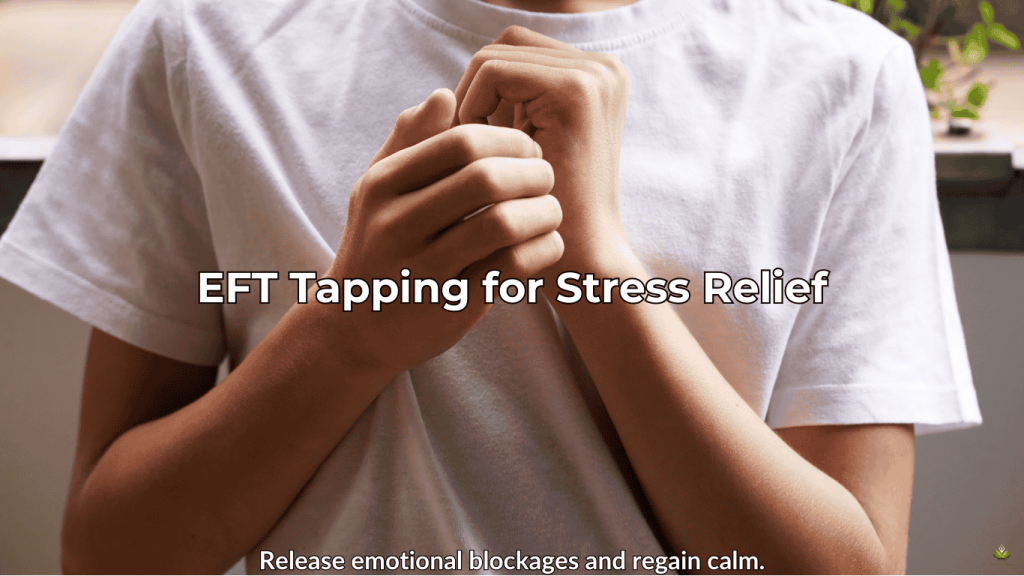
EFT, or tapping, is a powerful stress-relief method that combines acupressure and cognitive focus. You release emotional blockages and reset body energy while gently tapping on specific points of the body and acknowledging stressful thoughts.
Benefits of EFT:
- It reduces the intensity of emotions related to stress.
- It breaks the circle of overthinking and ruminations.
- Facilitates emotional balance and clarity.
How to Practice EFT:
- Identify a specific stressor and rate its intensity on a scale from 1 to 10.
- Tap on the following points while repeating affirmations:
- Karate chop (side of the hand).
- Eyebrow, the outer corner of the eye, beneath the eye, below the nose, and the collarbone.
- Reassess the intensity of your stress and repeat if necessary.
Pro Tip: As you tap, use affirmations like, “Even though I feel stressed, I deeply and completely accept myself. “
Physical Activity

Exercise is not just good for your body—it’s a natural stress reliever. Movement releases endorphins, improves sleep quality, and enhances overall resilience to stress.
Best Stress-Relieving Activities:
Stretching body: A combination of gentle movement and breathing to reduce tension.
Walking/running: Cures the mind and elevates your mood.
Strength Training: Builds physical resilience while reducing pent-up tension.
Sample Routine:
- Begin your day with 10–15 minutes of yoga stretches, followed by a brisk walk during your lunch hour of about 20 minutes. These small changes can make a big difference in reducing daily stress.
Nutrition and Hydration
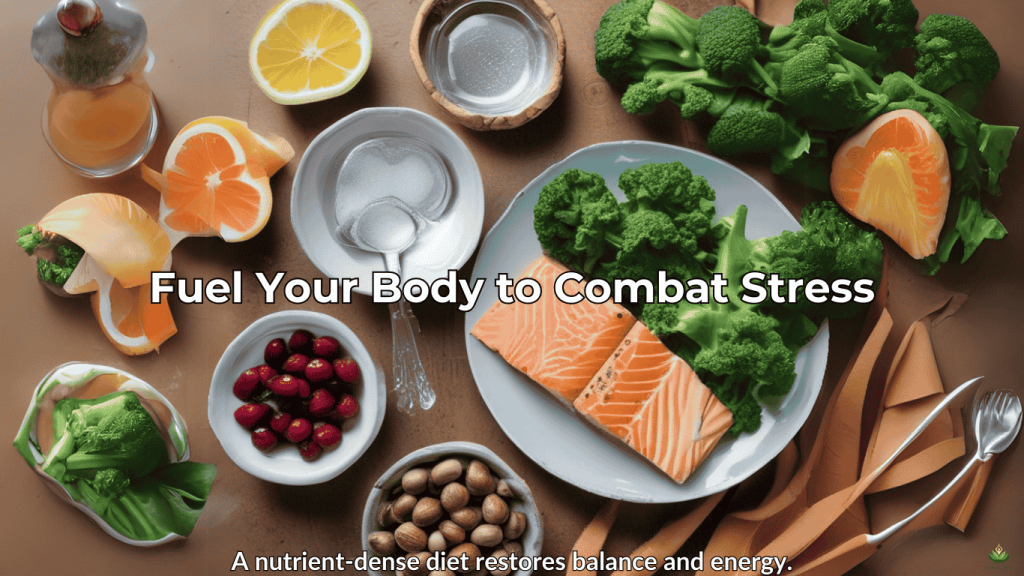
Your diet is at the center of your stress management process. Chronic stress depletes your body’s nutrients and makes you more susceptible to fatigue and irritability. A nutrient-dense diet rejuvenates your body and refreshes your mind.
Key Nutrients for Stress Relief:
- Magnesium: Found in leafy greens, nuts, and seeds, It aids in soothing muscles and calming the nervous system.
- Vitamin B Complex: Supports energy production and brain health.
- Omega-3 Fatty Acids: Reduces inflammation and improves mental clarity; found in fatty fish, walnuts, and flaxseeds.
What to Avoid:
- Caffeine and Sugar: Both can spike stress levels and lead to crashes.
- Processed Foods: Often high in additives and low in nutrients, these foods contribute to inflammation.
Pro Tip: Stay hydrated! Dehydration exacerbates stress, so drink at least eight glasses of water daily.
Energy Healing and the Holistical Method
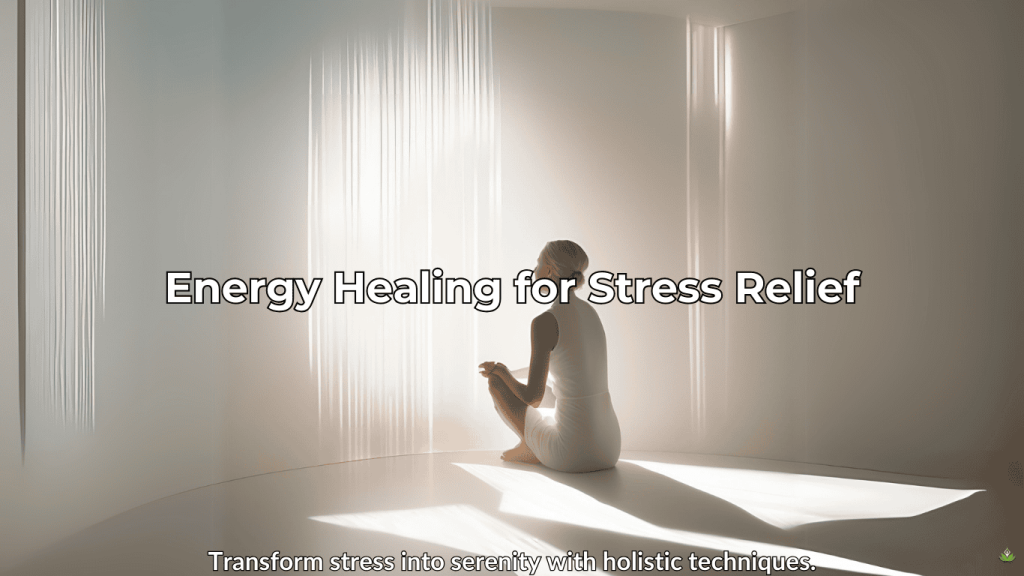
Stress isn’t just a physical or mental phenomenon—it also affects your energy field. The team will address the deeper layers of such stress, by techniques in energy healing, such as the Holistical Method.
Components of the Holistical Method:
EFT Tapping: Clears emotional patterns and resets your stress response.
Quantum Healing: Balancing of energy fields and promotion of inner peace.
Reprogramming Patterns: Change negative cycles to positive, empowering habits.
Example Practice:
Close your eyes and vividly imagine a white light wrapping around your body. Visualize this white light dissolving stress and substituting it with peace and calmness. You can also add affirmations, such as “I release this stress and welcome serenity.”
Building Resilience
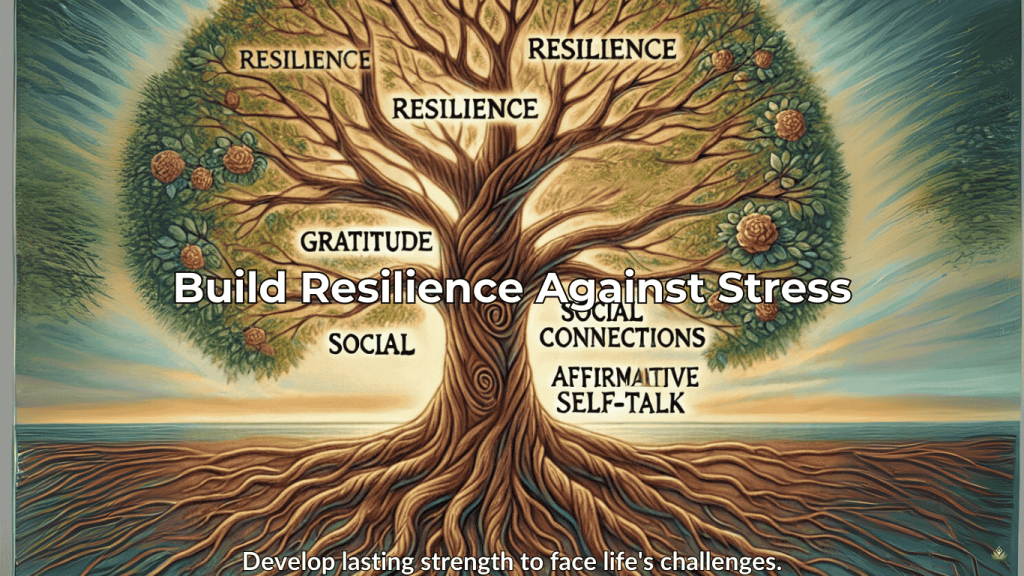
Breaking the cycle of stress is not just about dealing with it but rather about building resilience against it so that it will not overwhelm you in the future. Resilience helps you bounce back from challenges with more ease and strength.
Strategies to Build Resilience:
- Gratitude Journaling: Write down three things you’re grateful for daily to foster a positive outlook.
- Social Connections: Spend time with friends and family who support and uplift you.
- Affirmative Self-Talk: Substitute negative perceptions of yourself with enabling statements such as, “I am capable and strong.”
Example Daily Routine:
Begin your day by setting an intention:
- “Today, I will meet challenges calmly and clearly.
- Take breaks in work: reset, recharge.
- Seal your day with reflections of small victories and things to be grateful for.
Breaking Free: Combinations of Techniques
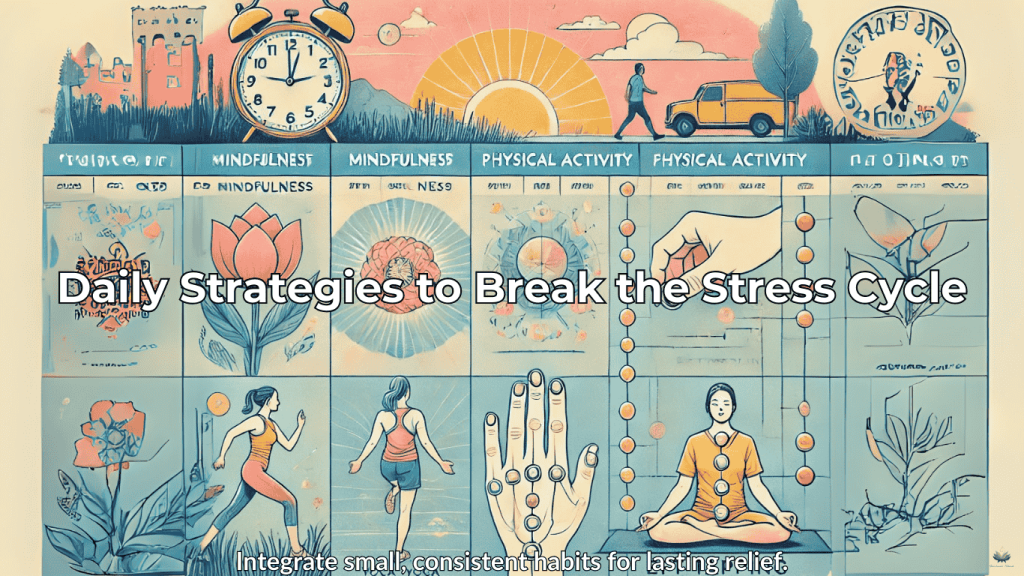
No single strategy ever exists in isolation, but putting many into place daily can break a vicious circle of stress.
Sample Daily Schedule:
- Morning: 5 minutes of mindfulness or meditation to enrich the start of the day.
- Afternoon: Take a 20-minute walk or practice light yoga to release tension.
- Evening: Use EFT tapping to address accumulated stress and relax before bedtime.
- Throughout the Day: Nourish your body with balanced meals and stay hydrated.
This layered approach interrupts the stress cycle and creates a foundation for long-term balance and resilience.
Key Takeaways
- Stress creates a self-perpetuating cycle of triggers, reactions, and sustained impacts that can harm both physical and mental health.
- Holistic strategies such as mindfulness, EFT tapping, physical activity, and proper nutrition can break the stress cycle.
- Energy healing and resilience-building practices strengthen your ability to handle future stressors.
- Consistency is key—combining these techniques creates lasting relief and promotes well-being.
Call to Action
Which strategy resonates with you the most? Feel free to share your opinions or stories in the comments below. For more practical, holistic ways to manage stress, follow @holisticalmetod and take the first step toward lasting relief today!
Angel Dimitrov. (2024). Holistical Method. https://holisticalmethod.com